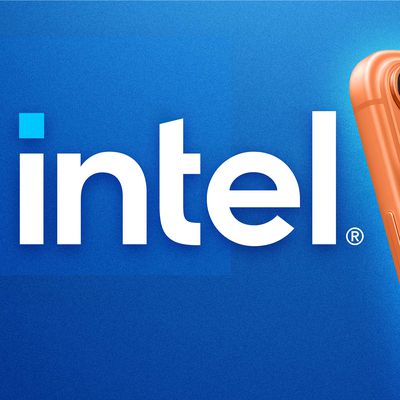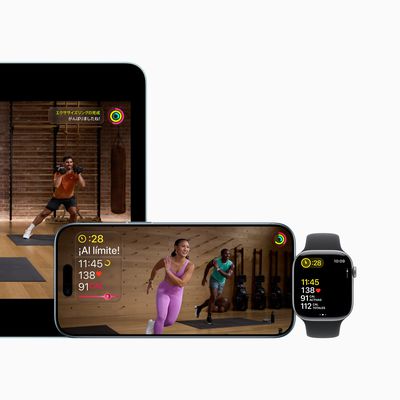Apple and Google Strengthen Privacy of COVID-19 Exposure Notification System, Targeting Next Week for Beta Release
As a result of feedback from officials around the world, Apple and Google today have disclosed a series of changes to their upcoming COVID-19 contact tracing initiative, with a focus on even stronger privacy protections and accuracy.

- Apple and Google are now referring to "contact tracing" as "exposure notification," which the companies believe better describes the functionality of their upcoming API. The system is intended to notify a person of potential exposure, augmenting broader contact tracing efforts that public health authorities are undertaking.
- Keys will now be randomly generated rather than derived from a temporary tracing key, making it more difficult for someone to guess how the keys are derived and use that information to try and track people.
- Bluetooth metadata will be encrypted, making it more difficult for someone to try and use that information to identify a person.
- Exposure time will be recorded in five minute intervals, with the maximum reported exposure time capped at 30 minutes.
- The API will include information about the power level of the Bluetooth signal in the data that is exchanged between phones. This can be used in conjunction with the RSSI ("Received Signal Strength Indication") to more accurately estimate the distance between two phones when contact was made.
- Apple and Google will allow developers to specify signal strength and duration thresholds for exposure events.
- The API will now allow for determining the number of days since the last exposure event to better determine what actions the user should take next.
- The API's encryption algorithm is switching from HMAC to AES. Many devices have built-in hardware for accelerating AES encryption, so this change should help performance and efficiency on phones.
Further changes to the API specifications will be made over time based on continued feedback from public health authorities.
Apple and Google are targeting next week for the release of the seed version of iOS and Android operating system updates, which will support these APIs to enable testing by public health authority developers. The software update will support iOS devices released in the last four years, dating back to the iPhone 6s and iPhone 6s Plus.
Apple and Google revealed plans for this exposure notification initiative two weeks ago. The joint effort will use Bluetooth to alert users when they have potentially come in close contact with someone who later tests positive for COVID-19, on an opt-in basis. The companies have shared an updated FAQ for users with more details about the system.
Popular Stories
Apple is about to release iOS 26.2, the second major point update for iPhones since iOS 26 was rolled out in September, and there are at least 15 notable changes and improvements worth checking out. We've rounded them up below.
Apple is expected to roll out iOS 26.2 to compatible devices sometime between December 8 and December 16. When the update drops, you can check Apple's servers for the ...
Apple is actively testing under-screen Face ID for next year's iPhone 18 Pro models using a special "spliced micro-transparent glass" window built into the display, claims a Chinese leaker.
According to "Smart Pikachu," a Weibo account that has previously shared accurate supply-chain details on Chinese Android hardware, Apple is testing the special glass as a way to let the TrueDepth...
Apple today seeded the second release candidate version of iOS 26.2 to developers and public beta testers, with the software coming one week after Apple seeded the first RC. The release candidate represents the final version iOS 26.2 that will be provided to the public if no further bugs are found.
Registered developers and public beta testers can download the betas from the Settings app on...
Apple has ordered 22 million OLED panels from Samsung Display for the first foldable iPhone, signaling a significantly larger production target than the display industry had previously anticipated, ET News reports.
In the now-seemingly deleted report, ET News claimed that Samsung plans to mass-produce 11 million inward-folding OLED displays for Apple next year, as well as 11 million...
Apple's iPhone development roadmap runs several years into the future and the company is continually working with suppliers on several successive iPhone models at the same time, which is why we often get rumored features months ahead of launch. The iPhone 18 series is no different, and we already have a good idea of what to expect for the iPhone 18 Pro and iPhone 18 Pro Max.
One thing worth...
Apple's chipmaking chief Johny Srouji has reportedly indicated that he plans to continue working for the company for the foreseeable future.
"I love my team, and I love my job at Apple, and I don't plan on leaving anytime soon," said Srouji, in a memo obtained by Bloomberg's Mark Gurman.
Here is Srouji's full memo, as shared by Bloomberg:I know you've been reading all kind of rumors and...
Apple's senior vice president of hardware technologies Johny Srouji could be the next leading executive to leave the company amid an alarming exodus of leading employees, Bloomberg's Mark Gurman reports.
Srouji apparently recently told CEO Tim Cook that he is "seriously considering leaving" in the near future. He intends to join another company if he departs. Srouji leads Apple's chip design ...
Intel is expected to begin supplying some Mac and iPad chips in a few years, and the latest rumor claims the partnership might extend to the iPhone.
In a research note with investment firm GF Securities this week, obtained by MacRumors, analyst Jeff Pu said he and his colleagues "now expect" Intel to reach a supply deal with Apple for at least some non-pro iPhone chips starting in 2028....
Apple and Google are teaming up to make it easier for users to switch between iPhone and Android smartphones, according to 9to5Google. There is a new Android Canary build available today that simplifies data transfer between two smartphones, and Apple is going to implement the functionality in an upcoming iOS 26 beta.
Apple already has a Move to iOS app for transferring data from an Android...
Apple today announced that Fitness+ is expanding to 28 new markets on December 15 in the service's largest international rollout since launch, accompanied by new language dubbing and a K-Pop music genre.
Apple Fitness+ will become available in Chile, Hong Kong, India, the Netherlands, Singapore, Taiwan, and additional regions on December 15, with Japan scheduled to follow early next year....
























